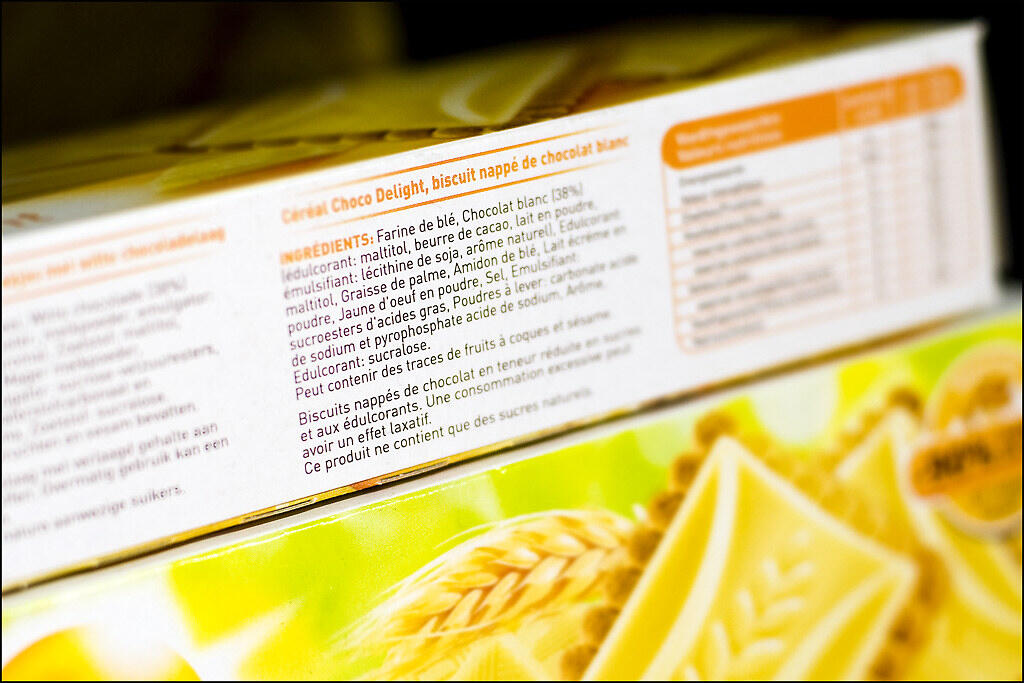India’s food labeling system is a key part of the country's food safety and consumer protection. For many consumers, especially in a culturally diverse country like India, understanding food labels is essential to make informed choices that align with their dietary preferences and health needs. In this article, we’ll explore what food labels in India entail, different types of food labels, and specific label indicators like vegetarian versus non-vegetarian status.
India’s diverse culinary landscape and religious dietary practices make food labeling particularly essential. Whether someone follows a vegetarian, non-vegetarian, or vegan lifestyle, labels allow consumers to instantly identify foods that align with their preferences and beliefs. Additionally, with rising health concerns like diabetes, hypertension, and food allergies, consumers are increasingly attentive to the details of packaging. Food labels provide a roadmap to understanding ingredients, additives, and nutritional content, making them indispensable tools for anyone looking to make mindful, health-conscious choices.

Food Labelling Regulations in India
All prepackaged food products sold in India must adhere to the Food Safety and Standards (Packaging and Labeling) Regulations, 2011, which are issued by the Food Safety and Standards Authority of India under the Ministry of Health and Family Welfare.
- All prepackaged food sold in India must comply with the following labeling requirements:
- The label must be in English, Hindi, or Devnagri language. Additional languages may be included as required.
- The label must not contain false, misleading, or deceptive information about the food product.
- The label must be securely affixed to the container.
- The label content must be clear, prominent, memorable, and easily legible by the consumer.
- If the container is wrapped, the wrapper must display the necessary information or make the label inside readily legible.
- The name of the food, trade name, and description must be provided. If the food contains multiple ingredients, the list must be presented in descending order of composition by weight or volume.
- Consulting an FSSAI consultant is essential to ensure compliance with the various labelling regulations for different types of prepackaged foods.
Key Components of Food Labels in India
The Food Safety and Standards Authority of India (FSSAI) governs food labeling laws in India, mandating specific information to be displayed, which is a consumer right. Here’s a breakdown of the critical components:
Ingredients List and Nutritional Information
Ingredients are listed in descending order by weight, with the primary ingredient appearing first. This list allows consumers to quickly assess what they’re consuming and make informed decisions based on health or dietary restrictions.
Nutritional information or facts per 100 gm, 100ml, or servings must be provided on the label, including energy value in kcal, amounts of protein, carbohydrate (including sugar), and fat in grams or ml, and any other nutrient for which a nutrition or health claim is made.
"Health claims," "nutrition claims," and "risk reduction" claims made on food labels will be thoroughly scrutinized by the FSSAI authorities and must be validated by test data.
"Health claims" refer to representations about the relationship between a food or its constituents and health, including claims about the physiological role of nutrients and their beneficial effects on the body.
"Nutrition claims" describe the nutritional properties of a food, beyond just its energy value. "Risk reduction" claims relate to significantly altering a significant risk factor for a disease or health-related condition.
| Nutrient | Typical Daily Value (%) |
|---|---|
| Calories | 2000 kcal |
| Protein | 50 g |
| Carbohydrates | 275 g |
| Fats | 78 g |
| Fiber | 25 g |
In addition to the ingredient list, nutritional values such as calories, protein, fats, and carbohydrates are also mandatory. The nutritional information per 100 g or serving size offers a clear picture of what’s in the food item, making it easier for people to manage their dietary goals.
Indian food labels list sugar under various names, including sucrose, glucose, corn syrup, and maltose. So, even if “sugar” isn’t listed, look out for these terms!
Vegetarian Food Label vs. Non-Vegetarian Food Label
One of the most distinguishing features of food labeling in India is the vegetarian and non-vegetarian symbol system. This simple yet effective designates products as suitable for vegetarians or non-vegetarians, a critical factor in Indian food choices influenced by religion and culture.
- Green Dot for Vegetarian: A green circle inside a square with a green outline signifies vegetarian products. This symbol means the product contains no animal-derived ingredients, making it safe for vegetarians.
- Red/Brown Dot for Non-Vegetarian: A brown dot in a square with a brown outline indicates non-vegetarian items. This symbol signifies that the product contains animal products, such as meat, fish, or eggs.
- Is egg marked as veg or non-veg? In India, eggs are classified under the non-vegetarian category, thus carrying the brown dot symbol. This classification aligns with dietary beliefs where eggs are considered animal-based and unsuitable for strict vegetarians.
| Label | Meaning |
|---|---|
| Vegetarian | Contains no animal products |
| Non-Vegetarian | Contains animal products or derivatives |
Expiry Date, Manufacturing Date, and Storage Instructions
Indian food labels must indicate both the manufacturing date and the expiry date, helping consumers avoid expired products. The format generally follows “Date of Manufacture” and “Best Before,” sometimes with additional storage instructions if the food has particular storage requirements (e.g., refrigeration, dry storage).
Examples of Date Formats
- MFD: 10/2023 (Manufacturing Date: October 2023)
- BB: 03/2024 (Best Before March 2024)
In India, “Best Before” is a quality guide, meaning the food is still safe to eat after this date but may lose freshness. “Use By” is stricter, indicating food safety – you shouldn’t consume it past this date.
Allergen Warnings and Additives Disclosure
Under FSSAI regulations, allergens like peanuts, soy, gluten, and milk must be clearly labeled, as they are common triggers for allergic reactions. This transparency extends to additives, artificial colors, and preservatives, allowing consumers to make choices based on health concerns or lifestyle preferences.
Commonly used labels for allergens include:
- “Contains Allergens”: Identifies the specific allergen present.
- “May contain traces of…”: Indicates potential cross-contamination during processing.
Some foods also disclose additives with a code (e.g., “E150” for caramel color) or a descriptive phrase (“natural color added”).
Food additives, colours, and flavours must be listed on the label with their class titles and specific names or recognized international numerical identifications. The addition of colouring matter and extraneous flavouring agents must be mentioned on the label.
The name and complete address of the manufacturer or importer must be provided on every package of food.
All packaged food must carry the net quantity by weight, volume, or number, excluding the weight of wrappers and packaging materials.
A lot number, batch number, or code number must be mentioned on all packaged food, except for bread and milk.
For imported food, the country of origin must be declared on the label.
Food Label Examples in India
- Packaged Snacks: Most packaged snacks like chips or namkeen carry a green or brown dot, list ingredients in descending order, and provide the nutrition information per serving. They usually contain labels for added preservatives and flavor enhancers.
- Dairy Products: Indian dairy products are typically marked as vegetarian unless they contain added ingredients derived from animals, such as rennet.
- Instant Noodles and Ready-to-Eat Meals: These items usually include detailed labels listing all ingredients, allergens, and storage instructions due to their longer shelf life.
| Component | Label Example |
|---|---|
| Vegetarian/Non-Vegetarian | Green Dot or Brown Dot |
| Ingredients | Wheat Flour, Vegetable Oil, Spices, Salt |
| Nutrition (per 100g) | Calories: 350, Protein: 8g, Carbs: 65g, Fats: 5g |
| Allergen Warning | Contains Gluten |
| Storage Instructions | Store in a cool, dry place |

Recent Changes in Food Labeling Laws in India
FSSAI continuously updates its guidelines to improve transparency and keep up with international standards so that you, the consumer, may seek redressal for any violations in India's consumer courts. Recent changes include:
- Front-of-Pack Labeling: To combat rising health issues, the FSSAI has discussed introducing a front-of-pack labeling system that would highlight high levels of sugars, fats, and sodium.
- Trans Fat Limitations: To reduce cardiovascular risks, FSSAI mandates that packaged food labels now disclose trans fat content, and trans fat levels must be capped at 2% of total fat content.
- Eco-Friendly Packaging Information: Labels increasingly include instructions on recyclable packaging or sustainable practices due to rising environmental awareness.
Importance of Food Labels in India
Food labels are vital in India due to the country's unique mix of cultural, religious, and health-related dietary considerations. They are more than just informational tools—they play a significant role in helping consumers make choices that align with their beliefs, lifestyles, and health needs. In a country where food consumption practices are diverse, transparent labeling supports both individual choice and public health. Here’s why food labels matter so much in India:
Cultural and Religious Significance
India is home to a variety of religious communities, each with specific dietary restrictions. For instance, many Hindus follow a vegetarian diet, while some Jains avoid root vegetables. Muslims avoid pork products, and Sikhs may follow specific dietary guidelines that exclude halal or kosher products. By clearly labeling foods with vegetarian or non-vegetarian indicators, manufacturers help consumers instantly recognize if a product aligns with their dietary customs. The green and brown dot symbols on packages are small but powerful symbols that enable consumers to stay true to their cultural and religious principles, building trust and transparency between manufacturers and the public.
Health and Safety Awareness
With the rising incidence of lifestyle-related diseases such as diabetes, hypertension, and obesity in India, food labels have become a critical tool for promoting public health. Nutritional information on food labels helps consumers monitor their intake of calories, sugar, fat, and sodium, allowing them to make healthier choices. This is particularly important as urbanization and the increasing availability of processed foods lead to more consumption of high-calorie, high-sugar items. Labels provide consumers with the information needed to manage or avoid conditions like high blood pressure, cholesterol issues, and diabetes, empowering them to make choices that support long-term health.

Transparency on Ingredients and Allergens
Allergen labeling is crucial, especially as awareness of food allergies grows in India. Common allergens, such as peanuts, gluten, soy, and dairy, are increasingly labeled to help consumers avoid foods that may trigger adverse reactions. This transparency is essential for people with allergies and specific intolerances, ensuring they can safely consume packaged foods. Additionally, food labels clarify the presence of artificial colors, flavors, and preservatives, which are of concern for those looking to avoid synthetic additives. For people who want to know exactly what they’re consuming, especially in a time of heightened awareness about additives and processed ingredients, ingredient transparency is invaluable.
Empowering Consumer Choice
Food labels empower consumers to make choices aligned with their lifestyle goals, whether it’s following a vegetarian diet, choosing organic products, or reducing sugar intake. Labels such as "organic," "no trans fats," "high fiber," or "low sugar" help consumers quickly identify products that match their health priorities. For example, someone looking to reduce their sugar intake can easily spot foods labeled "low sugar" or "no added sugar." This ease of identification helps consumers take control of their diet and health by selecting foods that meet specific dietary goals without requiring exhaustive research or guesswork.
Building Accountability and Trust with Manufacturers
Mandatory labeling regulations foster accountability among food manufacturers, requiring them to disclose accurate information about what’s in their products. This accountability promotes trust between consumers and brands, as consumers rely on these labels to reflect the truth about ingredients, sourcing, and quality. By adhering to labeling standards, companies demonstrate transparency and commitment to public health, which can lead to stronger brand loyalty and confidence in their products. As awareness of food safety standards grows in India, trust in labeling will become an increasingly vital factor in consumer purchasing decisions.
How to Read Food Labels in India for Health and Lifestyle
Reading food labels can seem overwhelming, but understanding them is a powerful tool for anyone looking to make healthier and more intentional dietary choices. In India, where food labels include critical information on ingredients, nutrition, and dietary indicators, knowing how to interpret this information can help consumers make decisions that align with their health goals, dietary restrictions, and lifestyle needs. Here’s a guide to navigating food labels effectively.
1. Check the Serving Size and Calories
One of the first things to notice is the serving size and calories per serving. Many products, especially packaged snacks and beverages, list nutrition facts per serving rather than per package, which can be misleading. A bag of chips, for instance, may contain multiple servings, so it’s essential to multiply the calories, sugar, and fat content if you plan to consume the entire pack. This helps in keeping track of your calorie intake, which is vital for weight management and general health.
2. Focus on Key Nutrients
Look for key nutrients that directly impact health, such as:
- Fats: Check for total fat, saturated fat, and trans fats. High levels of saturated and trans fats can contribute to heart disease, so opt for products with lower values of these fats.
- Sugar: High sugar intake is linked to various health issues, including obesity and diabetes. Foods labeled “no added sugar” or “low sugar” are generally healthier.
- Sodium: Excessive sodium can lead to hypertension and cardiovascular problems. Products with “low sodium” labels are preferable if you’re aiming to reduce salt intake.
- Fiber: High-fiber foods promote better digestion and blood sugar management, so look for higher fiber values in products like cereals, grains, and snacks.
3. Decode the Ingredient List
Ingredients are listed in descending order by weight, meaning the first few items make up the bulk of the product. If sugar or refined flour appears at the top, the product is likely high in sugar or simple carbs. Opt for products where whole grains, vegetables, or natural ingredients are listed first. Additionally, keep an eye out for additives and preservatives listed under their chemical names or codes, which may be linked to health concerns if consumed in large quantities.
4. Identify Allergen Warnings
Allergen information is mandatory on food labels in India, covering common allergens like gluten, nuts, dairy, and soy. If you have food allergies or sensitivities, check the allergen warnings or any statement that says “may contain traces of…” as a precaution. This information is often highlighted near the ingredient list, helping consumers quickly identify foods that are safe to consume.

5. Look for Lifestyle and Health Claims
In addition to standard nutrition and ingredient information, Indian food labels may include specific health claims and certifications that can guide your choices:
- Organic or Natural: Products labeled "organic" in India must meet FSSAI standards for organic farming, meaning they’re free from synthetic pesticides and fertilizers. “Natural” claims are regulated to ensure minimal processing.
- "No Trans Fat" or "Low Fat": These markers indicate that a product contains no or reduced unhealthy fats, making it a better choice for heart health.
- "High Protein" or "Rich in Fiber": Foods with these labels are good for muscle health and digestive wellness, respectively, making them ideal for those focusing on fitness and balanced nutrition.
Although the vegetarian symbol is widely used, there’s no official FSSAI symbol for vegan products yet. Vegan products rely on separate labeling or certifications from private organizations, so consumers often have to look closely at ingredient lists.
Sample Checklist for Reading Food Labels
Use the following checklist as a reference while shopping:
| Criteria | What to Look For |
|---|---|
| Serving Size | Compare with your intended portion |
| Calories | Check total calories if consuming more than one serving |
| Total Fats | Opt for low saturated and trans fat levels |
| Added Sugars | Choose products with "no added sugar" if possible |
| Sodium | Look for "low sodium" options |
| Fiber and Protein | Higher values are better for health |
| First Ingredients | Look for whole grains, natural ingredients |
| Allergens | Check if it contains allergens relevant to you |
| Lifestyle Markers | Organic, vegan, high protein, low carb, etc. |
Making Informed Choices with Food Labels in India
Food labels in India serve a crucial role, not only in guiding consumer choices but in reinforcing food safety and transparency. As dietary habits and health awareness continue to evolve, so will the labeling requirements. For consumers, understanding these labels—especially the vegetarian and non-vegetarian markers—helps make informed decisions, respects cultural practices, and supports healthier lifestyle choices.
By staying aware of these symbols, nutritional information, and ingredient lists, you’re empowered to choose foods that align with your dietary needs, preferences, and lifestyle goals. The next time you pick up a packaged food item, take a closer look at the label—it holds valuable insights into what you’re eating.











